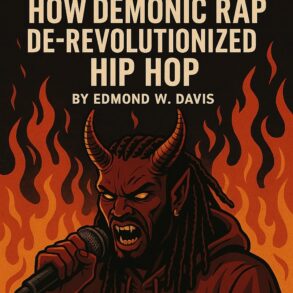Hip-hop, a genre born from African and African-American oral traditions, has undergone a remarkable evolution, shaping the narrative of black voices throughout history. This journey traces the development of themes and messages from its humble beginnings to a global cultural phenomenon, showcasing the social and cultural commentary of black artists.
Commercial rap music emerged as a genre primarily centered around party themes, drawing influence from disco, funk, and other musical styles. However, as hip-hop continued to evolve, it transformed into a means of expressing social issues and advocating for causes, reflecting the cultural and political landscapes of the African American, Afro-Caribbean, and Latino communities in New York City.
The evolution of rap lyrics mirrored a broader awareness of the world and the triumphs and tribulations of the black community. Key milestones in this shift include:
King Tim III (Personality Jock) by Fatback, released in 1979, is widely recognized as the inaugural commercially released rap song. It introduces Tim Washington, a young rapper who freestyled over a disco-funk track by the band Fatback.
Rapper’s Delight by The Sugarhill Gang, released in 1979, achieved the distinction of becoming the first hip-hop single to reach the Billboard top 40. The track features three rappers—Big Bank Hank, Master Gee, and Wonder Mike—delivering their verses over the instrumental of Chic’s hit song “Good Times.”
The Message by Grandmaster Flash and the Furious Five, released in 1982, stands as one of the most influential rap songs of all time. Rapper Melle Mel provides a compelling and realistic portrayal of the harsh conditions of inner-city life, set against a synth-driven beat crafted by producer Duke Bootee.


Hip-hop’s evolution rests upon four foundational pillars: DJing/turntablism, MCing/rapping, B-boying/breaking, and visual/graffiti art. Emerging from the African American, Afro-Caribbean, and Latino communities of New York City, these elements served as a means for expressing the struggles and aspirations of these communities, establishing a cultural framework that amplifies black voices and challenges societal norms. The amalgamation of these pillars has played a crucial role in shaping the distinctive identity and ethos of hip-hop.
Rap music emerged as a minimalist and rebellious expression of the harsh realities of life in the inner cities, where poverty, drugs, and violence were rampant. However, this also made it difficult for hip-hop to gain widespread recognition and respect, as the genre was seen as a product of a marginal and deviant subculture. Nevertheless, rap music established itself as an authentic and powerful voice of the oppressed and disenfranchised, exposing the social and economic injustices that plagued American society.
As hip-hop progressed, it became a potent medium for black artists to express their social and cultural perspectives. They used their influence to challenge issues such as systemic racism, inequality, and the hardships of oppressed communities. The changing themes and messages in hip-hop show a deliberate attempt to create social change.
To conclude, the evolution of black voices in hip-hop is a long journey that has seen various changes in themes and messages. From its origins in African and African-American cultures to its worldwide popularity, hip-hop has broken barriers and empowered the marginalized. The genre’s skill to portray the core of black experiences, critique society, and celebrate culture has made it a vibrant agent for change.
This post was originally published on this site be sure to check out more of their content.






